第121章
After this, I resolved not to move a step beyond Paquiatuba without an additional man, and one who understood the navigation of the river at this season.We reached the landing-place at ten o'clock, and anchored within the mouth of the creek.In the morning I walked through the beautiful shady alleys of the forest, which were waterpaths in June when we touched here in ascending the river to the house of Inspector Cypriano.After an infinite deal of trouble, I succeeded in persuading him to furnish me with another Indian.There are about thirty families established in this place, but the able-bodied men had been nearly all drafted off within the last few weeks by the Government, to accompany a military expedition against runaway negroes, settled in villages in the interior.Senor Cypriano was a pleasant-looking and extremely civil young Mameluco.He accompanied us, on the night of the 28th, five miles down the river to Point Jaguarari, where the man lived whom he intended to send with me.I was glad to find my new hand a steady, middle-aged and married Indian; his name was of very good promise, Angelo Custodio (Guardian Angel).
Point Jaguarari forms at this season of the year a high sandbank, which is prolonged as a narrow spit, stretching about three miles towards the middle of the river.We rounded this with great difficulty on the night of the 29th, reaching before daylight a good shelter behind a similar sandbank at Point Acaratingari, a headland situated not more than five miles in a straight line from our last anchoring place.We remained here all day; the men beating timbo in a quiet pool between the sandbank and the mainland, and obtaining a great quantity of fish, from which Iselected six species new to my collection.We made rather better progress the two following nights, but the terral now always blew strongly from the north-northeast after midnight, and thus limited the hours during which we could navigate, forcing us to seek the nearest shelter to avoid being driven back faster than we came.
On the 2nd of October, we reached Point Cajetuba and had a pleasant day ashore.The river scenery in this neighbourhood is of the greatest beauty.A few houses of settlers are seen at the bottom of the broad bay of Aramhna-i at the foot of a range of richly-timbered hills, the high beach of snow-white sand stretching in a bold curve from point to point.The opposite shores of the river are ten or eleven miles distant, but towards the north is a clear horizon of water and sky.The country near Point Cajetuba is similar to the neighbourhood of Santarem--namely, campos with scattered trees.We gathered a large quantity of wild fruit: Caju, Umiri, and Aapiranga.The Umiri berry (Humirium floribundum) is a black drupe similar in appearance to the Damascene plum, and not greatly unlike it in taste.The Aapiranga is a bright vermilion-coloured berry, with a hard skin and a sweet viscid pulp enclosing the seeds.
Between the point and Altar do Chao was a long stretch of sandy beach with moderately deep water; our men, therefore, took a rope ashore and towed the cuberta at merry speed until we reached the village.A long, deeply laden canoe with miners from the interior provinces passed us here.It was manned by ten Indians, who propelled the boat by poles; the men, five on each side, trotting one after the other along a plank arranged for the purpose from stem to stern.It took us two nights to double Point Cururu, where, as already mentioned, the river bends from its northerly course beyond Altar do Chao.A confused pile of rocks, on which many a vessel heavily laden with farinha has been wrecked, extends at the season of low water from the foot of a high bluff far into the stream.We were driven back on the first night (October 3rd) by a squall.The light terral was carrying us pleasantly round the spit, when a small black cloud which lay near the rising moon suddenly spread over the sky to the northward; the land breeze then ceased, and furious blasts began to blow across the river.We regained, with great difficulty, the shelter of the point.It blew almost a hurricane for two hours, during the whole of which time the sky over our heads was beautifully clear and starlit.Our shelter at first was not very secure, for the wind blew away the lashings of our sails, and caused our anchor to drag.Angelo Custodio, however, seized a rope which was attached to the foremast, and leapt ashore; had he not done so, we should probably have been driven many miles backwards up the storm-tossed river.After the cloud had passed, the regular east wind began to blow, and our further progress was effectually stopped for the night.The next day we all went ashore, after securing well the canoe, and slept from eleven o'clock till five under the shade of trees.
The distance between Point Cururu and Santarem was accomplished in three days, against the same difficulties of contrary and furious winds, shoaly water, and rocky coasts.I was thankful at length to be safely housed, with the whole of my collections, made under so many privations and perils, landed without the loss or damage of a specimen.The men, after unloading the canoe and delivering it to its owner, came to receive their payment.They took part in goods and part in money, and after a good supper, on the night of the 7th October, shouldered their bundles and set off to walk by land some eighty miles to their homes.I was rather surprised at the good feeling exhibited by these poor Indians at parting.Angelo Custodio said that whenever I should wish to make another voyage up the Tapajos, he would be always ready to serve me as pilot.Alberto was undemonstrative as usual;but Ricardo, with whom I had had many sharp quarrels, actually shed tears when he shook hands and bid me the final "adios."